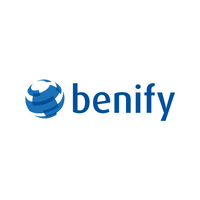Ways that technology and data can be used to improve performance

Despite the challenges that Covid-19 has presented us with, thanks to technology, productivity levels are as high as before or, in some cases, even higher. According to a recent study by global management consulting firm BCG, which surveyed 12,000 employees about the future of remote work, 75% said that during the first few months of the pandemic they have been able to maintain or improve productivity on individual tasks. 51% of respondents said they have been able to maintain or improve their productivity on collaborative tasks.
More interestingly, the study found that employees who are satisfied with their workplace technology, including videoconferencing tools and project management software, are twice as likely to have maintained or improved their productivity on collaborative tasks as those not satisfied with their tools.
Hubstaff’s State of Productivity and Management Report 2018 also revealed that 75% of global organisations are projected to increase their use of productivity tools. Be sure to read this post to learn about the importance of a single codebase in HR technology.
While there is no doubt that technology plays a key role in employee performance, there is something else even more important.
When needs are met, performance increases
Numerous studies have shown the link between job satisfaction and organisational performance. As we outlined in an earlier REBA article, employees perform better when their needs are met.
Abraham Maslow’s hierarchy of needs theory suggests that every individual has the following needs, in order of priority:
- Physiological needs
- Safety needs
- The need for belonging and love
- The need for esteem
- The need for self-actualisation
How to meet workforce needs
Inside every company are multiple generations working together. However, every employee has their own preferences based on their own life circumstances. So, how do you meet the needs of every individual?
This is where data and technology can be used to better understand your workforce and subsequently address their needs. If you’re an employer and you’re using an employee benefits platform, you’re sitting on a wealth of information. For example, think about employee benefits; instead of adopting a “take or leave it” approach, through HR technology, such as employee benefit platforms, employers can access benefits enrolment data.
With benefits data, employers can see which benefits are performing and among which employee groups and, conversely, which benefits are not performing. Employers can revise and tailor their benefits offering based on their findings to meet employee needs better.
And when it comes to meeting employee needs, our Benefits and Engagement report found that 49% of UK employees believe it’s important to them that they can access their employee benefits through a mobile phone app.
Apps and running with technology
Just over a year from the initial Covid-19 outbreak, working from home has become the new normal for many of us. From online meetings, chat and messenger apps to task management, note-taking, and benefits enrolment, apps have become essential tools for working.
To meet employee needs and, in turn, increase their motivation and productivity, it’s important to offer employees the technology they want. According to a Salesforce study, 71% of employees say they want their employer to provide them with the same level of technology as they use in their personal lives as consumers.
Digital distant socialising
During a time where offices are closed and physical gatherings have been restricted, maintaining contact with friends, family and colleagues is crucial to wellbeing. Today, chat tools, apps and video meetings have become essential to the way workforces communicate.
With both wellbeing and productivity in mind, consider how you can incorporate tools that increase collaboration, improve communication and allow for instant feedback between colleagues.
Use your benefits platform to survey employees and use the data to find out what technology your employees want to use. Remember, if you meet your employees’ needs, their productivity will increase. Our Benefits and Engagement report of more than 5,000 employees in the UK, Germany and Sweden reveals that chat tools, SMS messages, and push notifications in mobile apps are three channels that employees would like employers to use much more.
A few questions before you go
While much of HR and reward’s role is spent focusing on satisfying the needs of current employees, it’s equally valuable to use technology to look at the data from departing employees.
If your employee benefits platform includes digital offboarding tools, you can ask exiting employees to complete digital exit forms and questionnaires to gain valuable feedback on the areas you need to improve.
The information obtained from departing employees can help employers understand what could have been done better to prevent employees from leaving. For example, what are your competitors offering that is enticing employees to change employers?
To learn more about how technology shapes employee experience, download our free e-book, The New Employee Experience: How to maximise and optimise every step of the employee journey.
This article is provided by Benify.
Original article: HR Technology: Using Data to Improve Performance
Supplied by REBA Associate Member, Benify
Benify offers the market's leading global benefits and total reward platform.







